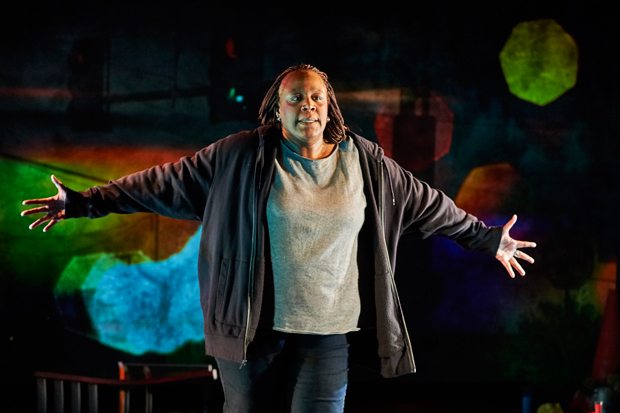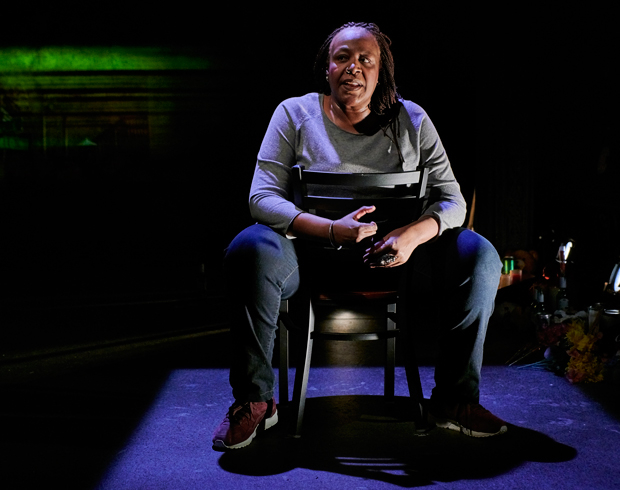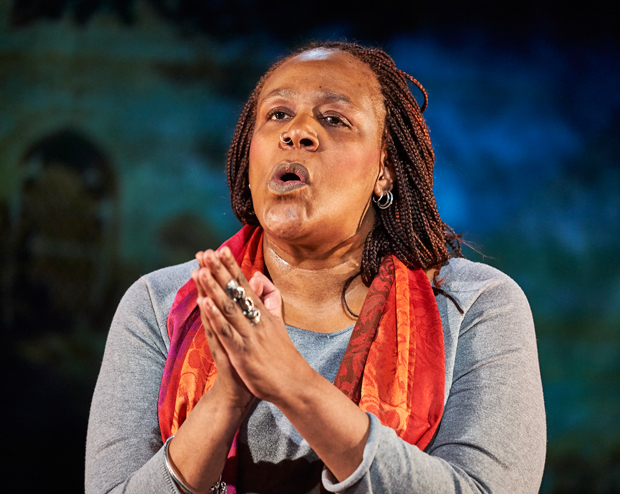Until the Flood

(© Robert Altman)
In this current moment of extraordinary discord in American society, Dael Orlandersmith's Until the Flood — being presented in its New York premiere at Rattlestick Playwrights Theater — offers a heartrending demonstration of the potential of art to reach across cultural boundaries and generate the kind of empathy that could potentially help bring us all closer together. For her latest solo show, Orlandersmith takes on one of the most divisive of recent incidents: Michael Brown's shooting death at the hands of white police officer Darren Wilson in Ferguson, Missouri. But through the testimonials Orlandersmith performs for us — adapted from interviews she conducted with people in and around the town in the aftermath of the shooting — Until the Flood pointedly avoids easy sanctimony, instead challenging us to confront the deep, long-running societal fissures that the incident, and many others like it in recent years, lay heartbreakingly bare.
The viewpoints on display range widely: from teenagers to retirees, from students to former schoolteachers, from black barbers to white landlords. Seventeen-year-old Hassan raps about how he feels he understands what 18-year-old Brown must have felt in his last moments, at least based on his own troubled family history and previous dealings with white Ferguson police officers. Other voices, however, put the incident in broader historical and social perspective. Louisa Hemphill, a 71-year-old retired former schoolteacher who is the only character to appear twice in the show, recalls an incident at a store in which she was horrified less by a white woman's vocal racism than by a black female janitor who she felt quietly judged her for her comparably more privileged upbringing in a way that suggested Uncle Tom-like ingrained racism.

(© Robert Altman)
An example of demonstrable racism comes to chilling life in the form of white property owner Dougray Smith, who recalls an incident in which he encourages his son to viciously retaliate against a group of angry black teenagers ganging on up him, and who admiringly compares himself to the callous Amon Goeth in Schindler's List. But Orlandersmith isn't interested in dramatizing simplistic good-versus-evil binaries. A genuine sense of sorrow pervades the testimony of 35-year-old white teacher Connie Hamm as she recalls how she lost a dear black friend after she dared to consider the issue from Darren Wilson's point of view. Not even the do-gooder attempts of well-meaning limousine liberals escapes Orlandersmith's inclusive gaze, as articulated by Reuben Little, an elderly black barber who remembers how he once castigated two young women, one white and one black, for what he perceived as their condescension in trying to turn him and other barbershop patrons into victims in need of saving.
Orlandersmith presents these perspectives in a dialectical manner, juxtaposing the testimonials as if they were in conversation with each other. She also inhabits all of these people onstage, and part of the appeal of Until the Flood lies in seeing the dazzlingly nimble ways in which she transforms from one character to another — throwing a chair out of frustration and crying for blood in one moment, for instance, before becoming a mild-mannered teacher the next. But Orlandersmith's virtuosity as a performer never overwhelms the human beings at the heart of this show, using her formidable gift for mimicry not only to tap into the psychologies of a vast array of people, but to build a sobering brick-by-brick portrait of a society still reckoning with racism in all its insidious forms.
Director Neel Keller supports Orlandersmith with a production that impresses in its simplicity. Scenic designer Takeshi Kata surrounds the performer with a flower- and tombstone-strewn Michael Brown memorial and a screen behind her that contains projections by Nicholas Hussong that identify the various people Orlandersmith inhabits and features interstitial documentary video and still images. Even the most noteworthy bits of stagecraft, however, don't detract from the main attraction that is Orlandersmith and her empathetic vision. When, in the show's final minutes, Orlandersmith herself finally speaks in her own voice to articulate her own sorrowful yet hopeful perspective, the effect is akin to that of a prayer, a poetic plea for understanding and peace that ought to be heard all across the land.

(© Robert Altman)










